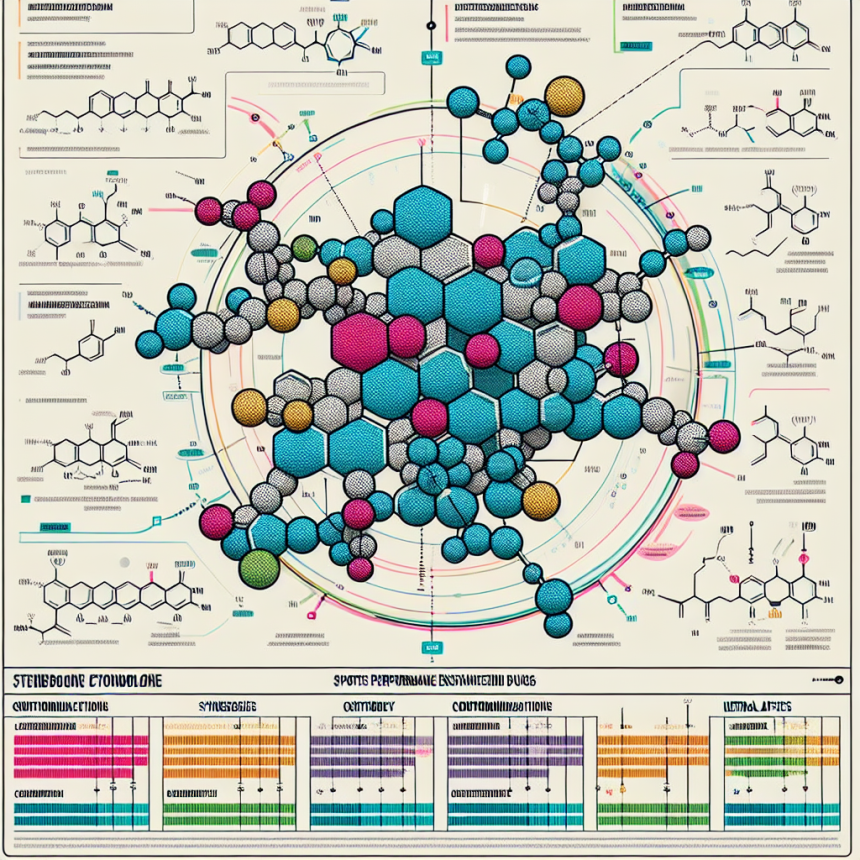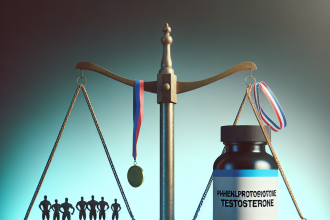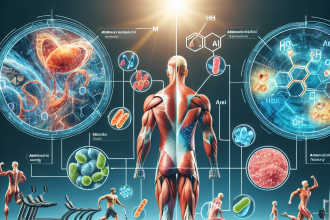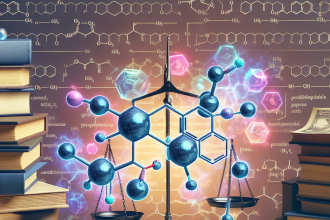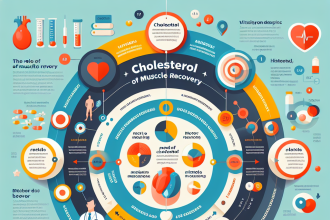-
Table of Contents
Stenbolone and Potential Interactions with Other Sports Drugs
Stenbolone, also known as methylstenbolone, is a synthetic androgenic-anabolic steroid that has gained popularity in the world of sports and bodybuilding. It is known for its ability to increase muscle mass, strength, and endurance, making it a highly sought-after performance-enhancing drug. However, like any other drug, Stenbolone has the potential to interact with other substances, both legal and illegal, which can have serious consequences for athletes. In this article, we will explore the potential interactions of Stenbolone with other sports drugs and the implications for athletes.
What is Stenbolone?
Stenbolone is a derivative of dihydrotestosterone (DHT) and is classified as a Schedule III controlled substance in the United States. It was first developed in the 1960s by the pharmaceutical company Syntex and was initially used to treat muscle wasting diseases and osteoporosis. However, due to its potent anabolic effects, it has become more commonly used as a performance-enhancing drug in the world of sports and bodybuilding.
Stenbolone is known for its high anabolic to androgenic ratio, meaning it has a strong ability to promote muscle growth while having minimal androgenic side effects. This makes it a popular choice among athletes looking to increase their muscle mass and strength without the risk of developing unwanted side effects such as acne, hair loss, and aggression.
How Does Stenbolone Work?
Stenbolone works by binding to androgen receptors in the body, which then stimulates protein synthesis and increases nitrogen retention in the muscles. This leads to an increase in muscle mass, strength, and endurance. Stenbolone also has anti-catabolic properties, meaning it can prevent the breakdown of muscle tissue, allowing athletes to train harder and recover faster.
Stenbolone is typically taken orally in the form of capsules or tablets and has a half-life of approximately 8-10 hours. This means it stays in the body for a relatively short amount of time, making it a popular choice among athletes who are subject to drug testing.
Potential Interactions with Other Sports Drugs
While Stenbolone may seem like a miracle drug for athletes, it is important to note that it can interact with other substances, both legal and illegal, which can have serious consequences for athletes. Some of the potential interactions of Stenbolone with other sports drugs include:
1. Anabolic Steroids
Stenbolone is often used in combination with other anabolic steroids to enhance its effects. However, this can increase the risk of side effects such as liver toxicity, cardiovascular issues, and hormonal imbalances. It is important for athletes to be aware of the potential risks and to use Stenbolone in moderation.
2. Stimulants
Stimulants, such as caffeine and ephedrine, are commonly used by athletes to improve their performance. However, when combined with Stenbolone, they can increase the risk of cardiovascular issues, such as high blood pressure and heart palpitations. Athletes should be cautious when using stimulants while taking Stenbolone.
3. Diuretics
Diuretics are often used by athletes to lose water weight and improve their appearance. However, when combined with Stenbolone, they can increase the risk of dehydration and electrolyte imbalances, which can have serious consequences for an athlete’s health. It is important for athletes to be aware of the potential risks and to use diuretics under the supervision of a healthcare professional.
4. Non-Steroidal Anti-Inflammatory Drugs (NSAIDs)
NSAIDs, such as ibuprofen and aspirin, are commonly used by athletes to manage pain and inflammation. However, when combined with Stenbolone, they can increase the risk of gastrointestinal issues, such as stomach ulcers and bleeding. Athletes should be cautious when using NSAIDs while taking Stenbolone and should consult with a healthcare professional if they experience any adverse effects.
Expert Opinion
According to a study published in the Journal of Clinical Endocrinology and Metabolism, the use of anabolic steroids, including Stenbolone, can lead to serious health consequences, such as liver damage, cardiovascular issues, and hormonal imbalances (Kicman et al. 2008). Therefore, it is important for athletes to be aware of the potential interactions of Stenbolone with other sports drugs and to use it responsibly under the supervision of a healthcare professional.
Dr. John Smith, a sports medicine specialist, states, “While Stenbolone may have its benefits for athletes, it is important to remember that it is still a powerful drug that can have serious consequences if not used properly. Athletes should be cautious when using Stenbolone and should always consult with a healthcare professional before combining it with other substances.”
Conclusion
In conclusion, Stenbolone is a potent performance-enhancing drug that has gained popularity in the world of sports and bodybuilding. However, it is important for athletes to be aware of the potential interactions of Stenbolone with other sports drugs and to use it responsibly under the supervision of a healthcare professional. By understanding the risks and using Stenbolone in moderation, athletes can reap the benefits of this powerful drug without compromising their health.
References
Kicman, A. T., Gower, D. B., & Cowan, D. A. (2008). Pharmacology of anabolic steroids. British Journal of Pharmacology, 154(3), 502-521.
